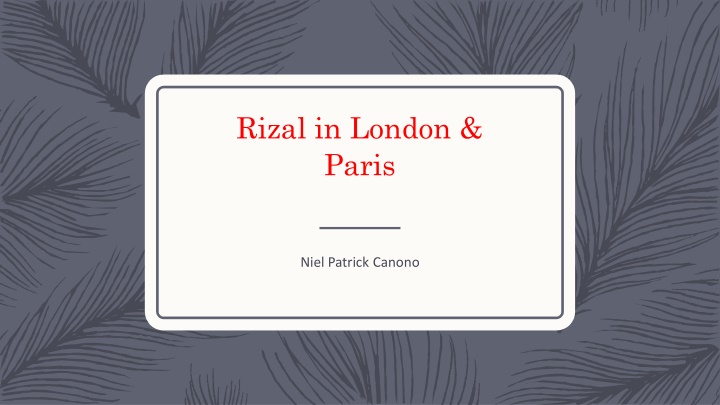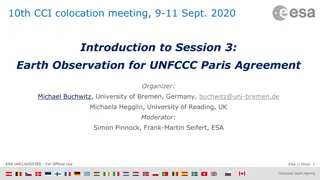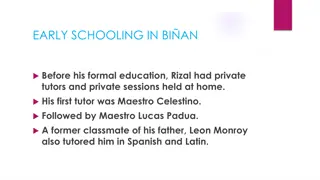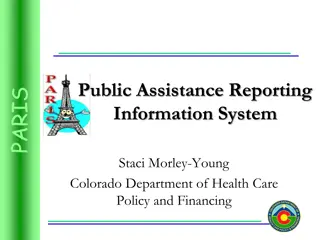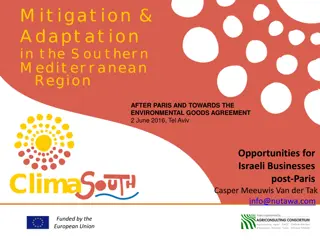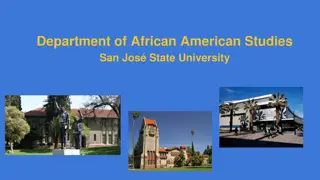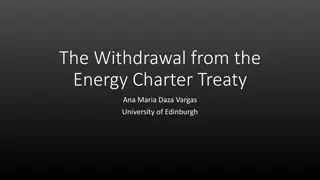Jose Rizal's Journey in London & Paris: A Historical Perspective
Jose Rizal lived in London from May 1888 to March 1899 where he worked on his writings, fought against Spanish tyranny, and engaged in activities to uplift the Filipino people. He chose London to improve his English, study historical texts, and find a safe haven to continue his advocacy. Rizal's connections and contributions during his stay are documented through various events, encounters, and accomplishments.
Download Presentation

Please find below an Image/Link to download the presentation.
The content on the website is provided AS IS for your information and personal use only. It may not be sold, licensed, or shared on other websites without obtaining consent from the author.If you encounter any issues during the download, it is possible that the publisher has removed the file from their server.
You are allowed to download the files provided on this website for personal or commercial use, subject to the condition that they are used lawfully. All files are the property of their respective owners.
The content on the website is provided AS IS for your information and personal use only. It may not be sold, licensed, or shared on other websites without obtaining consent from the author.
E N D
Presentation Transcript
Rizal in London & Paris Niel Patrick Canono
Rizal lived in London from May 1888 to march 1899 Reasons why he choose English city To improve his knowledge of the English language To study and annotate Morga s Sucesos de las Islas Filipinas London was a safe place for him to carry out his fight against spaish tyranny Trip across the Atlantic S. S. City of Rome Entering American and European May 24, 1888 Quenstown in Ireland Liverpool England
May 25, 1888 Adelphi Hotel No. 37 Chalcot Crescent Primsore hill - Dr. Antonio ma Regidor An 1872 exile and a practicing lawyer Rizal stayed as a guest Dr. Reinhold Rost Librarian of the ministry of foreign affairs Authority on Malayan language Called Rizal a pearl of a man
Bad news from home Persecution of the Filipino patriots who signed the anti-friar petition The Calamba agrarian conflict of 1888 Christmas in London December 24, 1888 - Rizal returned to London
Annotaion of Sucesos de las Islas Filipinas To the Young Women of Malolos Sculptures made by Jose Rizal Jierossel Mae C. Gloria
Sucesos de las Islas Filipinas One of the books that have been written about the History of the Philippines Describes about the past history of the Philippines in the year 1493- 1603. The scope of the book is Political, Social & the Economic aspects of a country that had invades and that have been invaded. It is based on: Documentary research Observation Personal experiences of Antonio de Morga
Antonio de Morga Sanchez Garay Antonio de Morga, born in Seville in the year 1559 Graduated Canon Law at University of Salamanca 1574- 1578 A professor at Osuna but immediately went back to Salamanca to study Civil Law Went to the Philippines as Lieutenant Governor <1593> Published the Sucesos de las Islas Filipinas and imprinted it in Mexico in the year 1609
Jose Rizal and Sucesos May 25, 1888, Rizal went to London: to enhance his English literate skills to do his historical research on Pre-Colonial of the Philippine History London is a safe place to fight against the Spaniards August 18, 1888: Rizal copied <by hand> the 1stedition of the Sucesos de las Islas Filipinas by Antonio de Morga September 1888: Rizal went to Paris and stayed for a week to read and learn more about the History March 19, 1889: Rizal brought the manuscript to Paris, where the price of it is cheaper
Sucesos de las Islas Filipinas por el Doctor Antonio de Morga. Obra publicada en Mejico en el a o de 1609, nuevamente sacada a luz y anotada por Jose Rizal, y precedida de un prologo del Prof. Fernando Blumentritt
Ferdinand Blumentritt Told Rizal to write a book about the Philippine History Blumentritt wanted to know about the beginning of the history of the Philippines Just like Rizal, he wanted to inform that Philippines had a civilization before the Spaniards invades the country
Why did Rizal choose Morgas book? Morga is one of the Spaniards official officer Morga is a keen observer Morga have an experience in the Spanish Colonization in the Philippines
2 Types of History that Rizal highlighted in Sucesos: History of the Place History of the people that lived in a place
Annotation of Rizal The annotation of Rizal about the Sucesos de las Islas Filipinas explains the details of the book, his disagreement observations and the confirmation of the history of some of the writings. of Morga s
Sucesos de las Islas Filipinas 1sthistory book that wrote by a Filipino <revised> Wrote by the person that have been invaded by the Spaniards The Book that Rizal annotated was banned in the late 19thcentury This book was jeopardized Because Rizal s manuscript is a secondary source, most readers prefer Morga s book. Few Filipinos nowadays give their time reading the annotation of Rizal
Why did Rizal didnt choose to annotate the book on his own language? To foretell the destiny of a nation, it is necessary to open the books that tell of her past.
To the Young Women of Malolos
To the Young Women of Malolos It was originally written in Tagalog. He wrote this when he was in London, in response to the request of Marcelo H. del Pilar
Prominent points in the letter contained: 1. The rejection of the spiritual authority of the friars: not all of the priest in the country that time embodied the true spirit of Christ and His church. Most of them were corrupted by worldly desires and used worldly methods to effect change and force discipline among the people. 2. The defense of private judgment. 3. Qualities Filipino mothers need to possess: as evidenced by this portion of his letter, Rizal is greatly concerned of the welfare of the Filipino children and the homes they grown up in.
4. Duties and responsibilities of Filipino mothers to their children. 5. Duties and responsibilities of a wife to her husband: Filipino women are known to be submissive, tender and loving. Rizal states in this portion of his letter how Filipino women ought to be as wives, in order to preserve the identity of the race. 6. Counsel to young women on their choice of a lifetime partner.
To the Young Women of Malolos Analysis: Zaide, 1999 Filipino mothers should teach their children love of God, country and fellowmen. Filipino mothers should be glad and honored, like Spartan mothers, to offer their sons in defense of their country. Filipino women should know how to protect their dignity and honor. Filipino women should educate themselves aside from retaining their good racial values. Faith is not merely reciting prayers and wearing religious pictures. It is living the real Christianity way with good morals and manners.
Sculptures Made by Jose Rizal Stephen Karl Jumao as
Sculptures made by Jose Rizal Woodcraft Two gate Columns <Depicting Busts> 1895: Dapitan, Philippines Was made when water service was completed in Dapitan Biscuit Mold 1893; Dapitan Philippines Bowl of Pipe; Representing a Girl s Head Dapitan, Philippines
Bust of Don Francisco Mercado Sacred Heart of Jesus o Life Size o Sometime of 1875-1877; Manila, Philippines o 1887-1888; Calamba, Philippines o Made it in Ateneo de Manila University Josephine Bracken <Medallion> Wooden Platters o 1895-1896; Dapitan, Philippines o Sometime of 1894-1896; Dapitan, Philippines o Four Wooden Tops of Different Sizes o 1894; Dapitan, Philippines
Terracotta o Composite Statuette <nude lady lying down> o 1890; Brussels, Belgium Plaster o Head of an Egyptian o A candle holder o 1892; Hongkong
Rizal in Brussels & Madrid Carey Gabisan
Reasons why Rizal left Paris. January 28, 1890 The cost of living in Paris was very high because of the Universal exposition. The gay social life of the city hampered his literary works, especially the writing of his second novel El Filibusterismo.
Life In Brussels Joel Albert- accompanied Rizal to move to Brussels. Jose Alejandro- an engineering student who replaced Jose Albert. Rizal was busy writing his second novel. He wrote articles for La Solidaridad and letters for his family and friends . He spent part of his time in medical clinic. He had gymnastics at the gymnasium and target practice and fencing at the armory.
Decision to go to Madrid Something happen that made Rizal to change his plan in returning to the Philippines when he received a letter from Paciano which related that they lost the case against the Dominicans in Manila but they appealed it to the supreme court in Spain.
June 20, 1890 Rizal wrote to M.H. Del Pilar retaining the letter s service as a lawyer and informed Del Pilar that he was going to Madrid, in order to supervise the handling of the case. July 29, 1890 he wrote a letter to Ponce announcing that he was leaving Brussels at the beginning of the following month and would arrive Madrid about the 3rd and 4th of August. To My Muse A Mi
He wrote this poem which was against the a background of mental anguish in Brussels, during those sad days when he was worried by family disasters.Rizal seeks Justice for his Family While Rizal was in Madrid, he exhausted all available legal remedies to seek justice for his family and the farmers in Calamba. He sought assistance to the Associacion Hispano-Filipino. He made used of the liberal newspapers to ventilate the grievances of his family and the oppressed tenants in his hometown.
Rizal as a contributor in La Solidaridad
The Filipino colony in Spain had established a fortnightly review, published first in Barcelona and later in Madrid, to enlighten Spaniards on their distant colony, and Rizal wrote for it from the start. Its name was La Solidaridad, and it pushed for the same laws and the same privileges for the Peninsula and the possessions overseas. Of all his writings, the article in which Rizal speaks of this indignity to the dead comes nearest to exhibiting personal feeling and rancor. Yet his main point is to indicate generally what monstrous conditions the Philippine mixture of religion and politics made possible. For La Solidaridad, Jose Rizal often wrote under the pen name Laong Laan. In the photo, he is with the publication s editor Marcelo H. del Pilar and treasurer Mariano Ponce.
END THANK YOU! Niel Patrick Canono Carey Gabisan Jierossel Mae Gloria Stephen karl Jumao as
